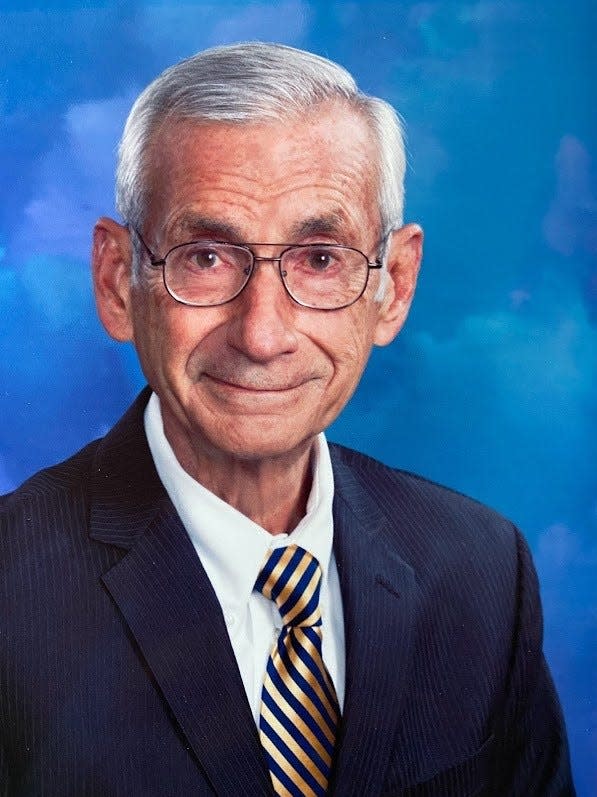Bartecchi: Obstructive sleep apnea and the heart
According to the Harvard Health Report, loud snoring accompanied by brief pauses in breathing (at least 10 seconds), many times during the night, is the sign of obstructive sleep apnea (OSA). However, according to Johns Hopkins Medical Center, 20% of patients who have OSA do not snore. Also important is that habitual snoring is a common problem and snoring itself does not indicate OSA.
The most common form of OSA, which often occurs in older adults, occurs when the throat muscles relax and block the flow of air into the lungs. For example, your tongue may fall back and block your airway. This condition, when moderate or severe, affects about 18% of adults, with twice as many males as females affected and can be associated with heart and blood vessel disease.
Many people with OSA may not be aware that they have such a problem. It often is first detected by the victim’s sleep partner. During such breathing pauses, the body’s oxygen level drops, stimulating the production of the stress hormone adrenalin. Repetition of this event over time can cause high adrenalin levels, which can damage the lining of the blood vessels and lead to poor heart muscle function, especially if associated with elevated blood lipids and other cardiac risk factors such as obesity and smoking.
People with untreated OSA are twice as likely to have a heart attack. They can also develop increased heart rhythm problems and strokes as compared with those who don’t have OSA.
Loud snoring, gasping or pauses in breathing are not the only signs of OSA. Excessive daytime sleepiness and tiredness, which can lead to problems of learning, focusing and reacting (auto accidents), sexual dysfunction or decreased libido, headaches, memory loss and even depression and anxiety can occur. The Sleep Foundation suggests that OSA can be an underlying factor causing insomnia or difficulty nighttime sleeping.
Risk factors for OSA include family history and genetics, lifestyle habits such as alcohol and smoking, opioid and other drug use and a variety of other illnesses that would need to be considered before making the diagnosis of OSA.
OSA may be first diagnosed by your primary care physician. Diagnosis, however, can be difficult and usually requires consultation with a healthcare provider with specialty training in sleep disorders. Several tests are available for evaluating OSA. These tests are usually done in a sleep center though new technology can allow for studies to be done in the home. Harvard Health suggests that 60%-70% of sleep studies for OSA can be done using home-based tests and that they can be quite accurate.
Once a diagnosis of OSA is made and the degree of OSA is determined, several treatment options exist. For milder cases, lifestyle changes, such as weight loss, or quitting smoking can be attempted. For more advanced OSA, there are some surgical treatments. Most people however will require continuous positive airway pressure therapy (CPAP). This is a very effective, first line treatment for OSA. This treatment keeps the patient’s airway open while asleep, by providing a constant stream of air through a mask that will eliminate breathing pauses caused by OSA.
For those patients with moderate to severe OSA, who have a difficulty accepting or adhering to CPAP, a new approach to treatment of OSA is the FDA approved stimulation of the hypoglossal nerve, known as Inspire (named after the originating company).
First a small impulse generator is implanted beneath the clavicle. Then a tunneled breathing sensoring lead is placed between the external and intercostal muscles and a tunneled stimulator lead is attached to the branch of the hypoglossal nerve that produces tongue protrusion. When the sensing lead detects inspiration is occurring, the impulse generator sends a signal to the stimulation lead to the hypoglossal nerve, which results in a slight forward displacement of the stiffened tongue.
Some people experience mild complications that are usually reversible. The rate of serious adverse events is less than 2%.
One study showed the device’s safety and effectiveness in patients with moderate to severe OAS, even 5 years after implantation, that such therapy provided the majority of patients with clinically meaningful reduction in the severity of their OAS and improvements in their quality of life. More than half of the patients were considered responders to this treatment. Once working however, it has not been shown to be as effective as CPAP.
The treatment goal is less than with CPAP, but still, there is no maintenance, cleaning or buying the supplies required with a PAP machine. However, the range for Inspire therapy treatment is $40,000 to $60,000. Some insurances have covered these costs.

Dr. Carl E. Bartecchi, MD, is a Pueblo physician and clinical professor of medicine and the University of Colorado School of Medicine.
This article originally appeared on The Pueblo Chieftain: Bartecchi: Obstructive sleep apnea and the heart
